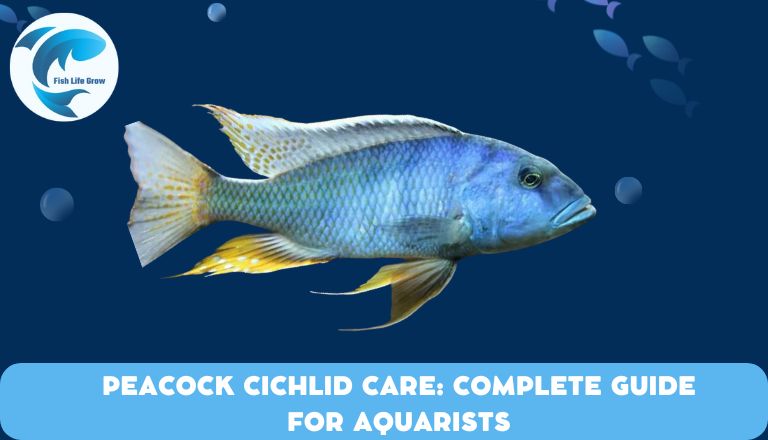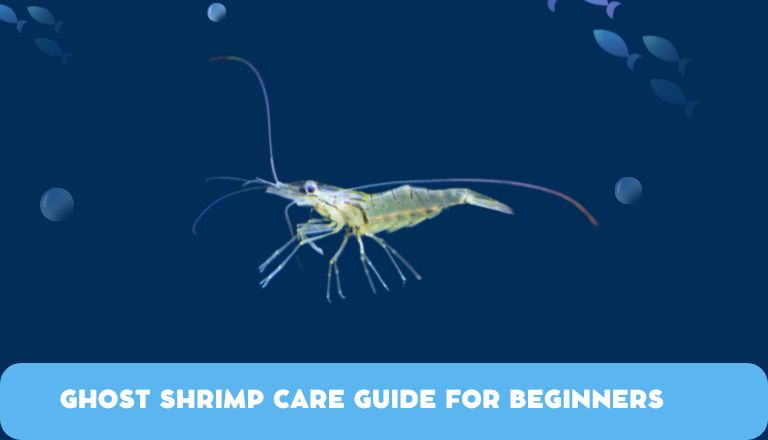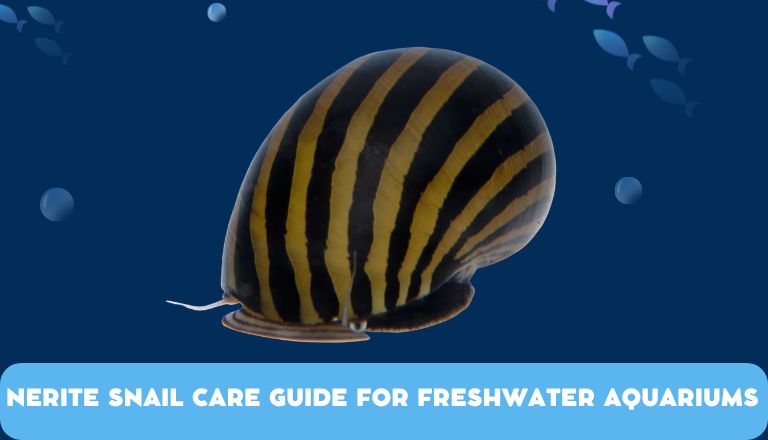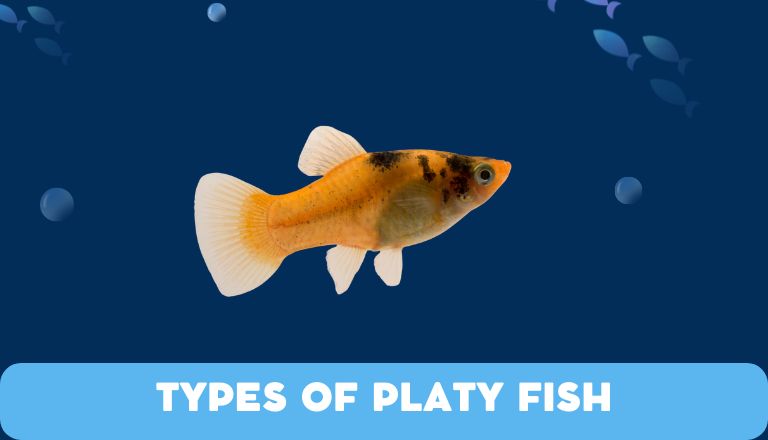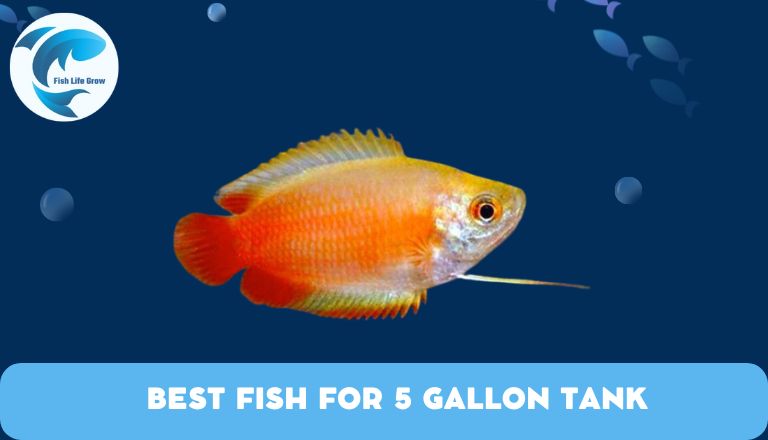Peacock Cichlid Care: Complete Guide For Aquarists
Exploring Peacock Cichlids is an exciting journey for fish enthusiasts. African cichlids in aquariums have unique personalities and can be territorial. By learning about their habitat, behaviour, and care requirements, aquarists can create a suitable environment for them. Let’s dive into the world of Peacock Cichlid care to uncover the secrets for successfully keeping these beautiful fish in your aquarium.
Peacock Cichlid Care Guide Quick Overview:
Peacock cichlids are colorful fish that need a 55-gallon tank to stay healthy. They like water temperatures between 76-82 F. Change their water regularly and feed them a mix of pellets, flakes, and live or frozen foods.
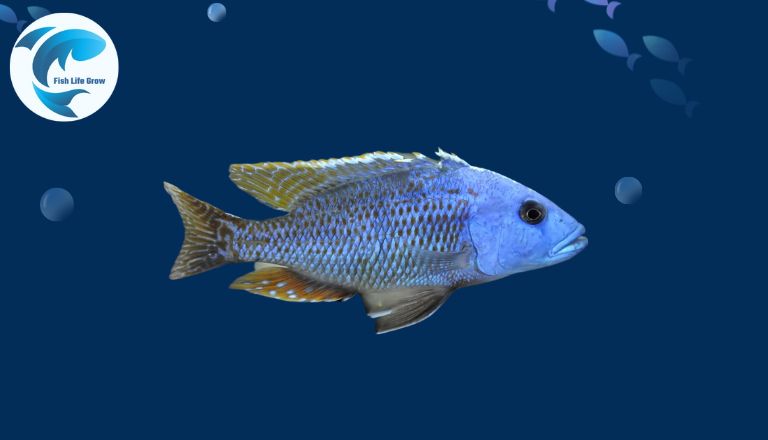
They are usually calm but can get aggressive when breeding. It’s best to have one male with multiple females to avoid fights and help them breed.
Peacock Cichlids in the Wild
Peacock cichlids are colorful fish with intricate patterns of Lake Malawi in East Africa. They use bright colors for mating and blending in. They have complex social behaviours, like making territories and hierarchies. Despite predators, these fish have adapted well to Lake Malawi, making it more beautiful.
Peacock Cichlid Size
Peacock Cichlids can grow up to 6-7 inches, sometimes reaching 8 inches with good care. Larger tanks allow them to grow bigger. Genetics also affect their size. To help Peacock Cichlids grow big and healthy, feed them protein-rich food and provide enough space for swimming.
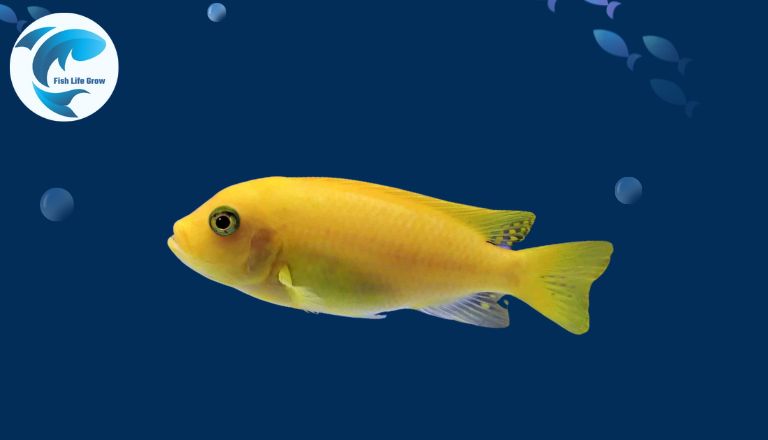
Peacock Cichlid Lifespan
Peacock cichlids can live 6 to 10 years in captivity with proper care. To help them live longer and healthier lives, focus on water quality, diet, tank size, and social interactions. Keeping the water clean, feeding them a balanced diet, giving them enough space to swim, and ensuring they get along with other fish are key to helping peacock cichlids thrive.
Peacock Cichlids Temperament
Peacock cichlids enjoy being with other fish in community tanks. They can sometimes be aggressive, especially when breeding or protecting their territory. Providing hiding spots in the tank and having the right balance of males and females can help prevent fights. Fish owners can create a peaceful environment for peacock cichlids by understanding their behaviour and needs.
Sexual Dimorphism In Peacock Cichlids
Male peacock cichlids are brightly colored to attract mates and show dominance. They have bold patterns and shiny scales. Females have simpler colors. These differences help with mating, recognizing species, and social order. Researchers study these differences to understand how the fish behave and survive.
Appearance & Body Type
Peacock cichlids are popular in aquariums for their bright colors and sleek bodies. They have pointed fins and come in shades like blue, yellow, orange, and green. Their shiny scales and patterns make them stand out in aquariums.
Their body shape helps them swim quickly and move around the tank easily, making it easier for them to find food and protect their territory. Peacock cichlids are both beautiful and well-suited for aquariums.
Peacock Cichlid Types
Peacock cichlids are colorful fish that have fascinated aquarium fans for many years. They are popular for their bright colors and interesting behaviour.
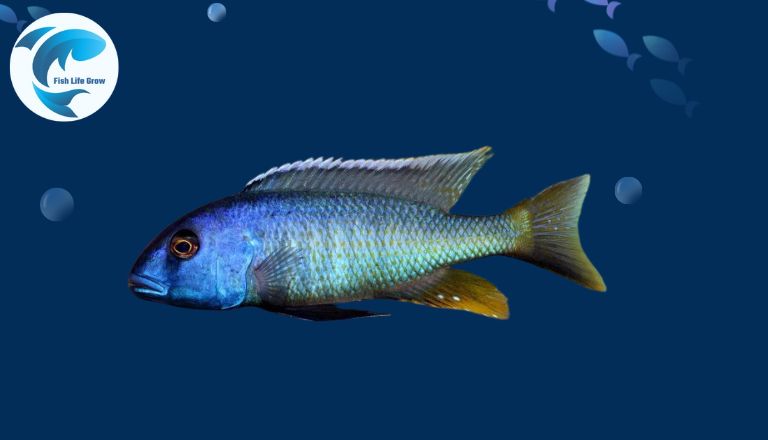
Aulonocara Nyassae
The Nyasa Peacock, also called Aulonocara Nyassae, is a colorful fish from Lake Malawi. It has bright colors ranging from light blue to deep yellow. This fish is peaceful and known for its pretty fins and patterns.
Aulonacara jacobfreibergi
The Eureka Red Peacock, also known as Aulonocara jacobfreibergi or Mamalela Peacock, has beautiful red and blue colors on its body. It is playful and does well in properly cared-for aquariums.
Aulonocara baenschi
The Aulonocara baenschi, also known as the Benga Sunshine Peacock, has yellow bodies with a bit of blue on their fins. These lively fish add color to aquariums and are liked for how they interact with others in a community.
Aulonocara stuartgranti
Aulonocara stuartgranti, also called the Blue Neon Peacock, is a beautiful fish with bright blue colors and patterns. They come from Lake Malawi.
Aulonocara baenschi
Aulonocara baenschi is often called the Sunshine Peacock because of its bright yellow color that looks like sunshine in your fish tank. This fish is known for its vivid colors and detailed patterns.
Aulonocara Red Ruby
The Aulonocara Red Ruby cichlid is a peacock cichlid with a deep red color that looks elegant. It stands out in a fish tank and is peaceful and friendly, getting along well with other calm fish.
Aulonocara maylandi
Aulonocara maylandi, also called the Sulphur Crested Cichlid, has a bright yellow-orange body and blue colors on males and females. Their unique appearance makes them stand out in any aquarium.
Aulonocara Maulana
Aulonocara Maulana fish have bright orange and red colors that look like flames. They are peaceful and good for community tanks.
Aulonocara Multicolor
Aulonocara Multicolor fish have different colors like blue, yellow, orange, and red. They change colors as they grow, showing new patterns.
OB Peacocks
The OB Peacocks have bright colors like orange, blue, and purple. They are special cichlids made by mixing different peacock cichlid types. This mix of colors in each fish makes them vibrant in an aquarium and shows the variety in the peacock cichlid family.
Peacock Cichlid Tank Size
Peacock Cichlids need a big tank to be happy. A 55-gallon tank is the smallest size recommended for a few Peacock Cichlids. In bigger tanks like 75 gallons or more, Peacock Cichlids can show off their colors and social behaviours better.
More space can help reduce fights among male fish. A larger tank also makes it easier to keep the water clean, which is good for the fish’s health.
Peacock Cichlid Tank Requirements & Habitat
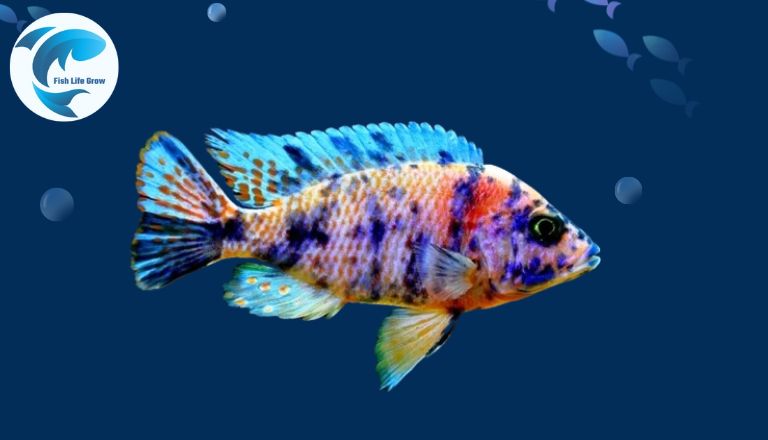
Heater
When preparing a tank for Peacock Cichlids, it’s important to keep the water temperature stable by using a good heater.
Filtration
Filtering the water in your aquarium is important to keep the fish healthy because they are sensitive to ammonia and nitrites.
The Aquarium Nitrogen Cycle
Understanding the nitrogen cycle in your tank is key to promoting good bacteria growth that will help keep the water clean and safe for your Peacock Cichlids.
Substrate
Choosing the right substrate for your tank makes it look good and helps bottom-dwelling cichlids like Peacocks thrive.
Lighting
Good lighting is important for plants in aquariums to grow well. LED lights are a good choice because they are efficient and can be customized. When setting up lighting for your tank, think about the tank size and plant placement. Monitor and adjust the lighting to help the plants grow well.
Plants and Decor
Adding live plants and decorations improves the look of the tank and provides hiding spots and territorial boundaries for the fish to thrive.
Diet
Peacock cichlids need a diet rich in protein to maintain their bright colors and stay healthy. They should be fed live or frozen foods like bloodworms, brine shrimp, and daphnia, similar to what they eat in the wild. High-quality pellets or flakes designed for cichlids can also provide the necessary vitamins and minerals.
Knowing the right food for peacock cichlids is essential for their health in an aquarium. By feeding them a variety of nutritious foods, these colorful fish will remain vibrant and energetic.
Peacock Cichlid Water Parameters
Maintaining the right water conditions for Peacock Cichlids is important for their health. These African fish like a pH of 7.5 to 8.4 and a water temperature of 76-82 F.Test the water often for ammonia and nitrite levels. Use a good filter and change the water regularly to keep it clean.
Make sure the tank has rocks and caves for the fish to hide and explore, like in Lake Malawi. By keeping these conditions right, you can have a colorful aquarium with happy Peacock Cichlids swimming around.
Breeding Peacock Cichlids
Breeding Peacock Cichlids successfully involves paying close attention to water quality, diet, and tank conditions. One interesting part of breeding these fish is watching their courtship rituals. Male cichlids often do fancy behaviours to attract females, like spreading their fins and changing colors. Once a pair has bonded, the female lays eggs in a carefully prepared spot, usually on a flat rock or substrate.
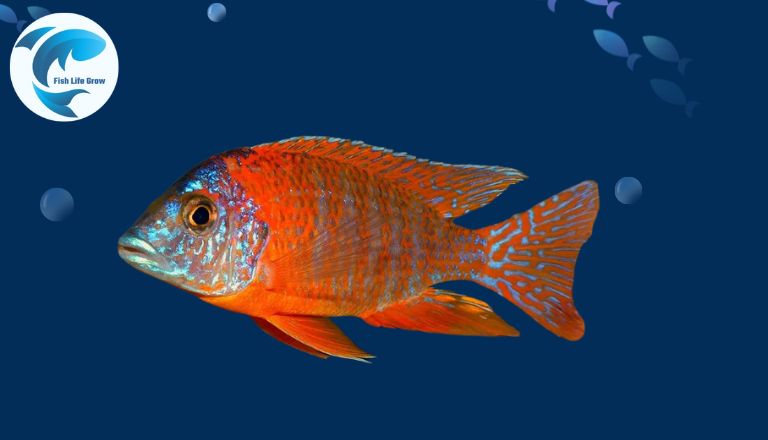
Having enough hiding spots and good breeding conditions can help breeding be more successful. Check water quality often during breeding to make sure conditions are good for the adult fish and their babies. By taking good care and paying attention to details, breeding Peacock Cichlids can be a rewarding experience for all fish enthusiasts.
Peacock Cichlid Tank Mates
Choose tank mates carefully for peacock cichlids. They can be semi-aggressive, so pick species that can defend themselves without bullying the cichlids. Good options are African cichlids like Mbunas or Haplochromis, and bottom-dwelling catfish like Synodontis or Plecos.
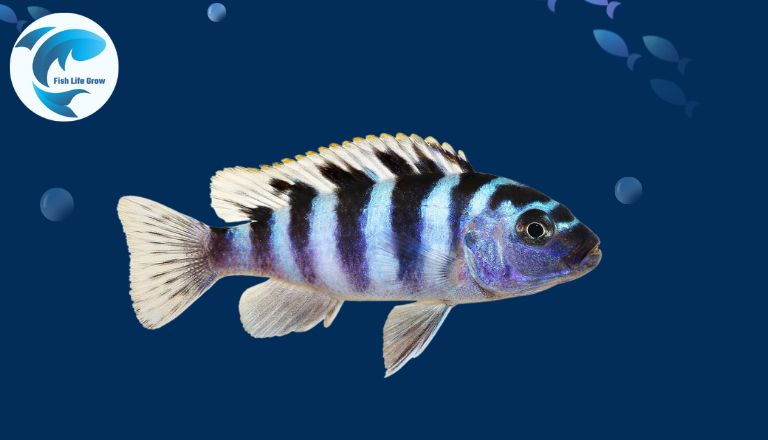
Avoid adding passive or shy fish, as they may not do well with the more assertive cichlids. By choosing compatible companions, you can create a lively and visually appealing community tank.
Conclusion
Peacock Cichlid care involves paying close attention and making sure they have the best living conditions. Keep the water clean, feed them different foods, and give them enough space and places to hide. Watch the water quality and how the fish behave. With effort and understanding, you can enjoy the bright colors and personalities of these fish for a long time. Learn more about Peacock Cichlid care to make a happy home for them and yourself.
FAQs
How Big Do Peacock Cichlids Get?
Peacock cichlids usually grow to 4-6 inches long, with some types growing up to 8 inches. The males are bigger and more colorful than the females, showing off shades of blue, yellow, orange, and red.
Can Peacock Cichlids Live in A Community Tank?
Peacock cichlids can live in a community tank, but they may show aggression towards other fish. It’s important to have hiding spots and barriers in the tank to reduce aggression. Choose tank mates that are similar in size and behaviour to prevent stress and injury.
Are Peacock Cichlids Aggressive?
Peacock cichlids are usually peaceful compared to other cichlids. They may get a bit territorial during breeding or when establishing a hierarchy, but they are not very aggressive. They can live with different fish in the tank. Each fish may act differently based on their personality and the tank setup.
Do Peacock Cichlids Require Specific Tank Decorations?
Peacock cichlids do well in different tank setups with hiding spots, caves, and natural decorations. Create a habitat that mimics their natural environment for their health and happiness.

